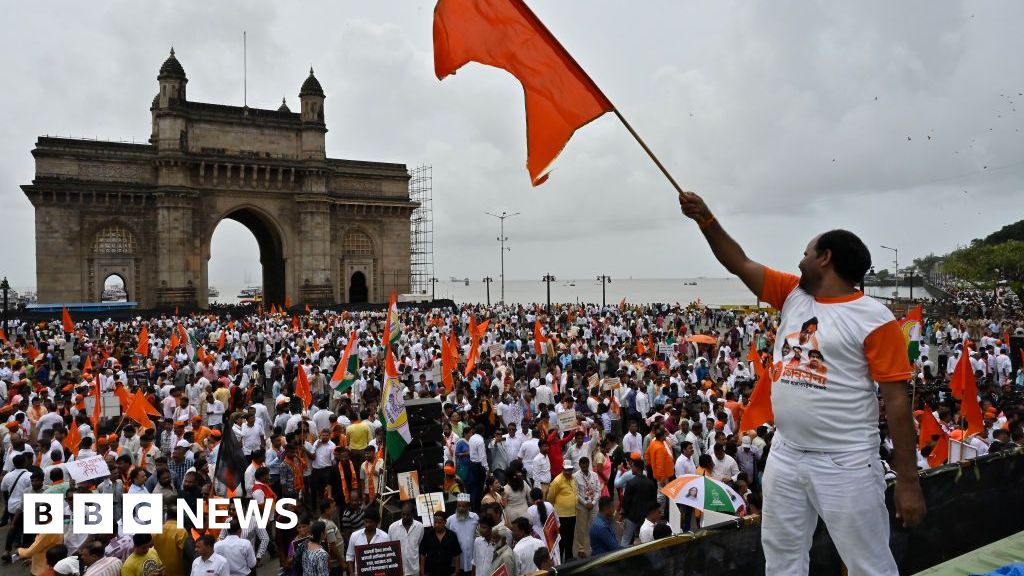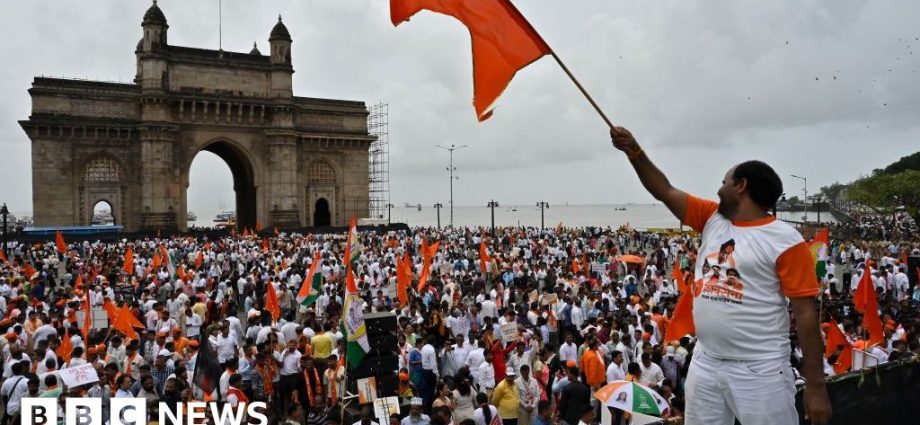
The collapse of a massive statue of a 17th Century ruler has sparked protests and a political controversy in the western Indian state of Maharashtra.
Shivaji Shahaji Bhosale was a warrior king whose exploits against the Mughals made him a hero during his own lifetime. He is revered in the state and celebrated as an icon of the Hindu right.
So the statue’s collapse, weeks before elections are due in Maharashtra, has put the state’s ruling coalition on the back foot and given opposition parties a potent issue to raise.
It even drew an apology from Prime Minister Narendra Modi, who inaugurated the statue in December and whose Bharatiya Janata Party (BJP) is part of Maharashtra’s ruling coalition.
“I extend my apologies to all those who worship Chhatrapati Shivaji Maharaj (Emperor Shivaji) as their revered deity. I know their sentiments are hurt,” he said on Friday.
The BJP is part of an alliance which runs the state government along with breakaway factions of two regional parties, the Shiv Sena and the National Congress Party (NCP).
Even members of the NCP held “silent protests” last week, demanding action from the state government that they are part of.
Built at a cost of 23.6m rupees ($281,285; £214,185), the 35-ft (10.6m) statue in Sindhudurg district collapsed on 26 August amid heavy monsoon rains.
The opposition has demanded Chief Minister Eknath Shinde’s resignation, alleging corruption in its construction.
Senior opposition leader Sharad Pawar said during a protest rally that numerous statues of Shivaji across the state were still standing but only the newly installed one had collapsed.
“There was corruption in the process of installing the statue. This is an insult to Chhatrapati Maharaj,” he alleged.
Mr Shinde has denied the charges, saying the statue collapsed because of strong winds in the coastal town.
Ravindra Chavan, a state minister, said that the public works department, which he heads, had already informed the Indian Navy – responsible for overseeing the statue’s construction – about rust in its nuts and bolts.”
Ashish Shelar, the BJP’s state chief, has also apologised publicly, saying the mistake will be rectified and the culprits will face punishment. Police have arrested one person, the structural consultant on the project, and say they are on the lookout for the statue’s sculptor.
Formally crowned as Chhatrapati – king in Sanskrit – in 1674 at Rajkot fort where the collapsed statue was installed, Shivaji ruled over a Maratha kingdom which included parts of western, central and southern India. He was seen as an astute leader who successfully made alliances with or militarily resisted the ruling powers of his time.
He has become an increasingly central figure in Maharashtra’s politics of late and no political party can afford to ignore him or be accused of insulting him. Marathas from Shivaji’s caste dominate the political landscape of the state – 12 of 20 chief ministers since the state’s formation have been Marathas.
Politicians would also not prefer to inflame the sentiments of the Maratha community, who have repeatedly protested in recent years demanding quotas in government jobs and educational institutions.
So the opposition will hope to frame the issue as an insult to the state and Maratha pride.
The opposition alliance, called Maha Vikas Aghadi (MVA) has organised state-wide protests. In response, the BJP has held counter-protests, accusing the MVA of politicising the issue.

